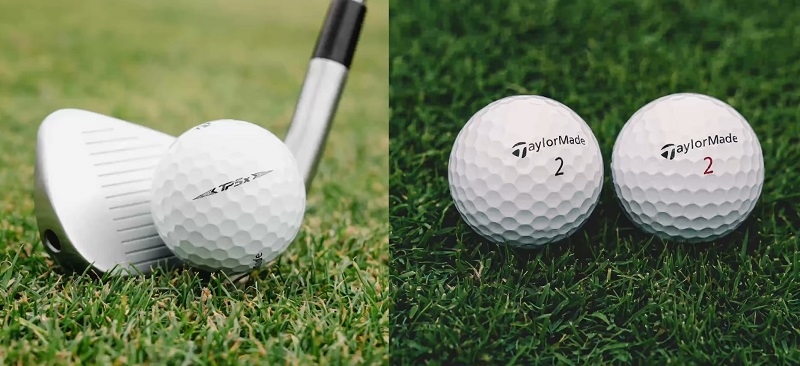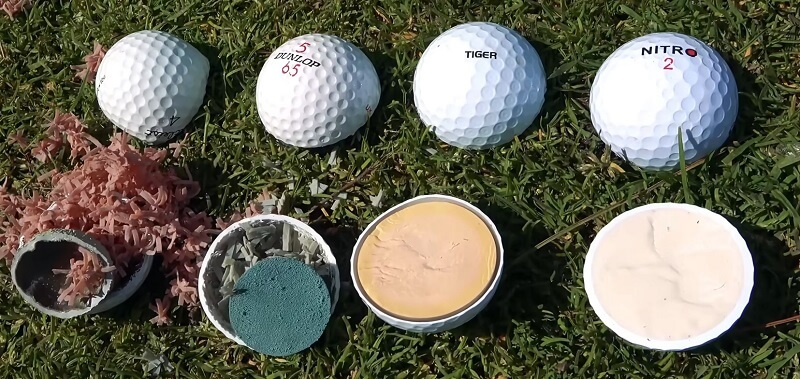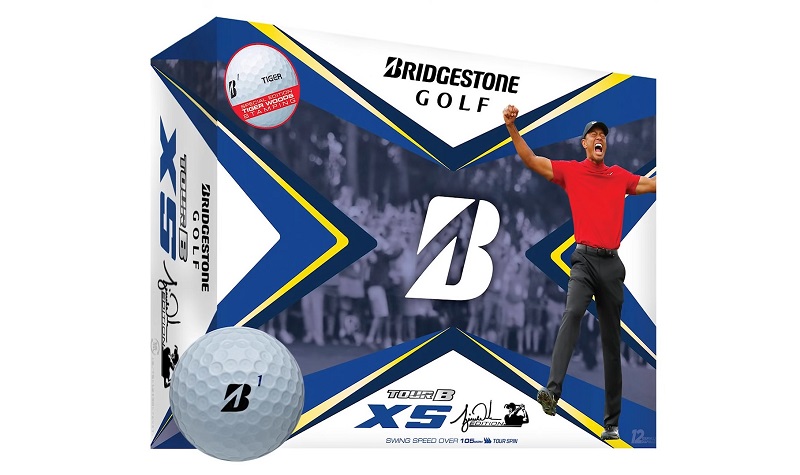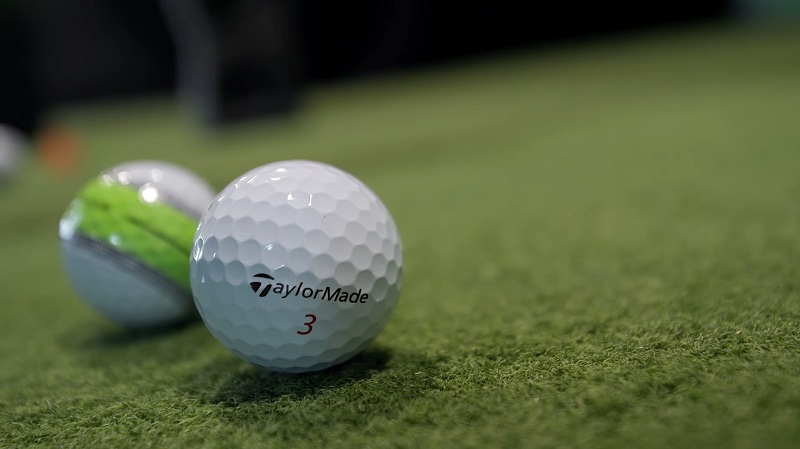If you’re a golfer, you’ve wondered which golf ball is right for you. With the dizzying array of options available on the market today – from distance balls to extra-soft models and everything in between – finding the right one can be a challenge.
Don’t stress though – with a little know-how and some personal preference, choosing your perfect fit is simpler than it seems! In this blog post, we will take an in-depth look at all of the factors that go into deciding which golf ball best suits your needs: type of player, skill level, swing speed and budget.
Read on to get equipped with all the knowledge needed to make your next trip to buy golf balls confidently.
Why Is It Important To Use The Right Golf Ball?
Selecting the right golf ball is critical to a golfer’s game. To achieve optimal performance, golfers must find a ball that enhances their playstyle and abilities.
The golf ball a player selects will affect their trajectory, spin, and distance, so choosing the right one tailored to their needs will give them a competitive edge. Additionally, golf balls have varying compression rates, which can affect the feel and sound of the shot, from a soft and delicate touch to a more aggressive feel.
These factors all contribute to a golfer’s ability to make shots, so choosing the right ball can make or break a player’s game. In conclusion, selecting the right golf ball can significantly impact a golfer’s game, and it’s crucial to find one that fits your playing style and abilities.
Understand Golf Ball Construction
Before diving into the factors that affect your golf ball choice, it’s important to understand the construction of a golf ball. A golf ball has three components:
The Core: This is the innermost layer of the ball, made up of rubber or synthetic materials. The core’s size, shape, and compression determine how far the ball will travel and how many spins it will generate.
The Mantle: The mantle layer is situated around the core and is made up of various materials such as rubber, plastic or composite. The mantle aims to help control the spin and provide extra distance.
The Cover: The outer layer of the ball is called the cover, and it’s typically made up of either Surlyn or urethane. The cover’s hardness determines the amount of spin and controls you’ll have on your shots.
Now that you understand the construction of a golf ball, let’s dive into the factors that affect your golf ball choice.
What Factors to Consider While Choosing the Right Golf Ball?

When it comes to choosing the right golf ball, several factors need to be taken into account. Selecting the correct ball is essential to ensure maximum performance and enjoyment from your game. Here are some of the key factors to consider when choosing the right golf ball:
Golf Ball Compression
Essentially, compression refers to how much the ball gives when struck by the clubface. Knowing the appropriate compression for a player’s swing speed and skill level can help maximize their distance and accuracy on the course. It’s essential to understand that there isn’t necessarily a “one size fits all” compression rating, as players of varying levels and swing speeds require different compression levels.
Factors such as temperature and altitude can also influence the ideal compression for certain players. To determine the right compression level, players should consult with a pro or experiment with various balls and track their performance data to find what works best for their game.
Golf Ball Spin and Trajectory
The spin on a golf ball can be influenced by various factors such as the club angle, impact location, and swing speed. Selecting the right ball is essential as it can provide players with the desired spin rates for better accuracy and control.
Players looking for more spin would benefit from a ball with a softer cover, whereas those seeking less spin should opt for a harder cover.
Golf ball manufacturers have created different types of balls to satisfy various player needs, with varying compression levels, dimple patterns, and materials. It’s crucial to consider the environmental conditions and skill level while choosing a ball to maximize its spin characteristics.
The ball’s trajectory is also important, as it will determine how it reacts to certain course conditions. High-trajectory golf balls tend to perform better when there’s much wind, and low-trajectory balls may be more useful when facing a headwind.
Golf Ball Dimples
The small indentations covering a golf ball’s surface help reduce air resistance by channeling the airflow around the ball. This results in a higher lift force and a longer carry distance.
The number and shape of dimples on a golf ball can vary, with some models having as few as 300 and others boasting over 500. Choosing a golf ball with the appropriate dimple configuration for a player’s needs is crucial in optimizing their game.
For example, a golfer with a slower swing speed may benefit from using a ball with more and deeper dimples to generate more lift, while a player with a faster swing may prefer a ball with shallower dimples for better control.
Golf Ball Cover Material
Urethane, surlyn, and ionomer are three common materials used in manufacturing golf balls. Each material offers unique benefits to golfers, depending on their preferences and playing style.
Urethane is known for providing excellent spin control and a soft feel. Surlyn is more durable and offers a harder feel, making it a popular choice for beginners and those who want straighter shots.
Ionomer is a versatile material that offers a balance between the two. It has a softer feel than surlyn with more durability than urethane.
Swing Speed
Another factor to consider when choosing a golf ball is the player’s swing speed. Golfers with slower swing speeds may benefit from using a low-compression ball, as it will help them get the most out of their shots by increasing their launch angle and reducing spin. Conversely, faster swingers may prefer a higher compression ball to maximize their distance.
Feel
The feel of the ball is also important, as it helps golfers know if they are hitting their shots correctly. Generally, softer balls offer a better feel, whereas harder balls have less feedback. When it comes to selecting the right ball, feel is a personal preference, so it’s important to experiment with different balls and find one that best suits the player’s game.
What Are The Different Types Of Golf Balls?

Golf balls come in various t sizes, shapes and types to suit different playing styles and game needs. The most common golf ball types include:
One-piece balls
The simplest type of golf ball features a single-layered construction and is durable, inexpensive, and ideal for beginners.
Two-piece balls
Two-piece balls are made up of a solid rubber core and an outer cover or shell. Two-piece balls are typically inexpensive and have limited spin, making them ideal for beginners or players with slower swing speeds. They are also quite durable and can be used for a long time before needing to be replaced.
Three-piece balls
Three-piece golf balls comprise two layers – a solid rubber core and an inner cover layer. The inner layer gives the ball more spin and distance, which makes them great for golfers with higher swing speeds. They come in various hardness levels, which gives players different feel and performance.
Four-piece balls
Four-piece golf balls are similar to three-piece balls but with the addition of a mantle layer that wraps around the inner core. This helps to add more spin and control when hitting the ball. They are generally used by mid to low-handicap players who need extra control and distance off the tee.
Five-piece balls
Five-piece golf balls are the most technologically advanced and have five layers – a solid core, an inner cover layer, a mantle layer, an outer cover layer and an outer shell. They provide maximum control while still providing plenty of distance. Five-piece balls have been designed to help experienced players work the ball in any direction they desire.
How To Choose The Right Golf Ball?

Choosing the right golf ball can improve your game and make it more enjoyable. Here are some general tips for choosing the right golf ball for different levels of golfers:
Beginner: If you are a beginner golfer, it’s best to choose a golf ball that is designed for distance and durability. Look for balls with a hardcover made from materials such as Surlyn or ionomer. These materials are more durable and can withstand beginner swings that may miss the sweet spot on the clubface. A lower compression ball will also provide more distance for slower swing speeds.
For beginners: Best Golf Balls For Beginners 2023 – Top 10+ Picks & Review
Intermediate: If you are an intermediate golfer, consider a golf ball with more spin and control around the greens. Look for a ball with a soft cover made from materials such as urethane. Urethane covers provide better spin control and a softer feel, which can help you stop the ball more quickly on the green. Additionally, a medium compression ball will provide a good balance of distance and feel.
Advanced: Consider a high-performance golf ball with maximum control and spin if you are an advanced golfer. Look for a ball with a multi-layer construction that offers a softcore and a soft cover made from materials such as urethane. Additionally, consider the ball’s compression rating based on your swing speed. A high-compression ball will require a faster swing speed to maximize distance.
Get inspired by the pros: Uncover the Perfect Balls and Club Selection That Made Tiger Woods a Golf Legend
Final Thoughts
Selecting the right golf ball matters and can help you become a better golfer. Everyone’s game is different and can require specific golf balls. Whether you are an expert or beginner golfer, taking the time to research what type of golf ball is suitable for your game can make all the difference on the course.
With a good set of golf balls in hand, you’ll be prepared to hit from different lengths and terrain, stay focused on the target, increase your accuracy, and ultimately enjoy a more successful round of golf. Be sure to do your research before purchasing a new set of golf balls so that you can have the confidence to perform your best every time you tee it up.
Frequently Asked Questions
What Is The Difference Between Two-Piece And Three-Piece Golf Balls?
Two-piece golf balls are made up of a solid rubber core and an outer cover or shell. They are typically inexpensive and have limited spin, making them ideal for beginners or players with slower swing speeds. Three-piece golf balls comprise two layers – a solid rubber core and an inner cover layer. The inner layer gives the ball more spin and distance, which makes them for golfers with higher swing speeds.
What Is The Easiest Golf Ball Color To Find?
White is the easiest and most common color for golf balls. It’s easy to spot on the fairway or green and makes the ball easier to track in flight. Many golfers also prefer white as it provides a truer reflection of the green grass’s color and helps them better see the line of their putt.
How Long Does A Golf Ball Last?
The average lifespan of a golf ball is between three to four rounds. Higher quality balls may last up to five or six rounds, but it will depend on the type of ball and how it is used. Factors such as your swing speed, the amount of spin you generate and the conditions of play will all affect the lifespan of your golf ball.
What Is The Most Durable Golf Ball?
The most durable golf balls are usually made from Surlyn or ionomer covers. These materials are more resistant to cuts and scratches, making them ideal for golfers who need extra durability. Additionally, two-piece golf balls are more durable than three-piece or multi-layer models.
Are Expensive Golf Balls Worth The Money?
That depends on your skill level and preferences. Generally, expensive golf balls offer more spin and control around the greens, making them ideal for advanced golfers. However, if you are a beginner or intermediate player with a slower swing speed, an inexpensive ball may be just as good and provide more distance.
Is It Better To Buy Golf Balls In Bulk?
Buying golf balls in bulk can be a great way to save money in the long run. If you golf regularly, it may be worth investing in a set of balls that you know and trust. Additionally, buying in bulk allows you to have a variety of balls on hand so that you can switch up your ball type depending on the conditions.
How Do I Know Which Compression Golf Ball Is Right For Me?
The compression rating of a golf ball will tell you how much spin and distance it can generate. Generally, golfers with slower swing speeds should look for a lower compression ball (60-80). If you have a faster swing speed, then look for a high-compression ball (90-100). It is also important to consider the type of ball you are using and how it performs with your swing. Try several balls to find the right one for you.
What Materials Are Used For Golf Ball Covers?
The most common materials used for golf ball covers are Surlyn, urethane and ionomer. Surlyn is a hard, durable plastic that provides excellent distance and durability. Urethane covers provide good spin and control with the added benefit of being soft and comfortable. Ionomer covers offer good distance and durability while maintaining a softer ball feel.
How Should I Store My Golf Balls?
To ensure the best performance of your golf balls, it is important to store them properly. It is best to keep them in a cool, dry place away from direct sunlight. You can also store them in an airtight container for added protection. It is also important to use a Ball Retriever or other tool to pick up your golf balls after each shot, as this helps to reduce wear and tear.
How Do I Clean My Golf Balls?
Cleaning your golf balls is an important part of taking care of them. Simply use a soft cloth and mild detergent with lukewarm water to clean your golf balls. Avoid using harsh soaps or abrasive cleaning products, as these can damage the cover of your golf balls. If you need to remove any tough stains, use a toothbrush or a soft-bristled brush. After cleaning, make sure to completely dry your golf balls before storing them away.
What Is A Dimple Pattern On A Golf Ball?
Dimple patterns are the small indentations covering a golf ball’s surface. These dimples act like tiny wings that help keep the ball in the air longer, reducing drag and increasing distance. The dimples also create spin-on shots around the greens, allowing for better control and accuracy. Different manufacturers have developed unique dimple patterns, so finding the one that works best for your game is important.



Thank you!